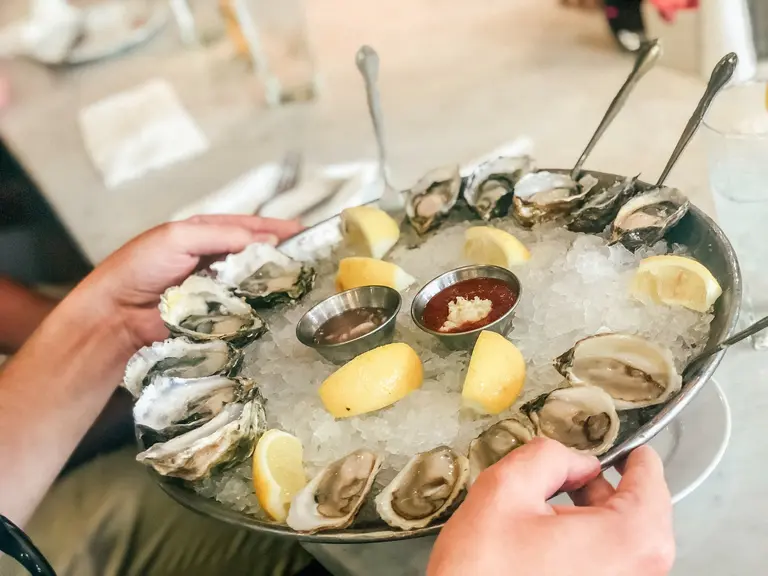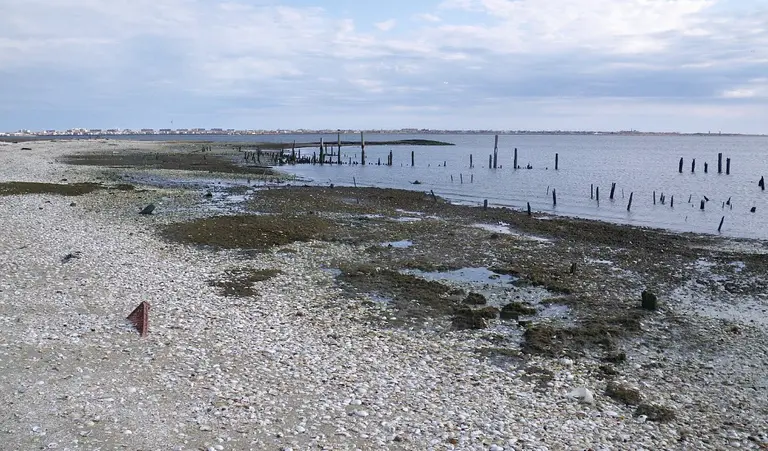April 15, 2015
Today, when most New Yorkers think of oysters it has to do with the latest happy hour offering the underwater delicacies for $1, but back in the 19th century oysters were big business in New York City, as residents ate about a million a year. In fact, oyster reefs once covered more than 220,000 acres of the Hudson River estuary and it was estimated that the New York Harbor was home to half of the world's oysters. Not only were they tasty treats, but they filtered water and provided shelter for other marine species. They were sold from street carts as well as restaurants, and even the poorest New Yorkers enjoyed them regularly.
Though we know the shores of Manhattan, especially along today's Meatpacking District and in the Financial District near aptly named Pearl Street, were chock full of oysters, there were also a couple of islands that played a part in New York's oyster culture, namely Ruffle Bar, a sandbar in Jamaica Bay, and Robbins Reef, a reef off Staten Island marked with a lighthouse.
Find out about these two forgotten islands

